Diptera.info :: Identification queries :: Diptera (adults)
Who is here? 1 guest(s)
|
Muscidae: Coenosia albicornis
|
|
| Stephen R |
Posted on 27-01-2010 12:21
|
|
Member Location: Clitheroe Lancashire UK Posts: 2396 Joined: 12.06.09 |
Thanks for the reassurance, Oxycera - I thought my pig-headedness must be irritating everone  Now I can see myself as the grain of sand in the oyster stimulating the production of pearls of great price Now I can see myself as the grain of sand in the oyster stimulating the production of pearls of great price  Joke, Figure 44b in M of CE is of the hind tibia of C. flavicornis. It looks similar to this one, and the seta in question, which must be the one the key refers to as a posterodorsal, is labelled 'dorsal' in the diagram. This illustrates that a seta may be morphogenically posterodorsal but appear in a more or less dorsal position. Have I got the point? We seem to have proved that this fly is either an anomalous individual or from a species not covered in the key (apart from being far outside its known range, emiliae doesn't seem to have f1 grey). I'll try to catch some more when they re-appear - I think I saw quite a few of these last summer. It's a pity it wasn't albicornis, because the description of the frontal triangle fits exactly, as does everything else in the description in my book, except that the fore-femur should be dark dorsally and yellow ventrally whereas this one looks grey all over. Oh, and it has a pd on t3  Very many thanks, Joke. You can have your life back now  Stephen. Edited by Stephen R on 27-01-2010 12:24 |
|
|
|
| Stephen R |
Posted on 02-02-2010 19:53
|
|
Member Location: Clitheroe Lancashire UK Posts: 2396 Joined: 12.06.09 |
I'm very sorry for re-opening this thread, but this Coenosia is keeping me awake at night  - and it's not even Halloween. - and it's not even Halloween.My question is (still): is it at all possible that the authors of MCE have interpreted the bristle in question as a dorsal pre-apical and not as a (sub-median) posterodorsal? My reasons for thinking that this may be so are: 1: the diagrams (44c,d) illustrating the species (means, tigrina) with 'approximated pre-apical dorsal and posterodorsal setae' show these at a distance from the tibial apex which is similar to the position of this one - so this could be interpreted as 'pre-apical'. Also it looks like the last in a series with the other pre-apical bristles. 2: Although the bristle points in a somewhat posterodorsal direction, its origin is on a row of setulae which go straight to the point of the knee: almost exactly on the dorsal line. 3: The couplet (75) which separates trilineella, flavicornis and emiliae, which have the posterodorsal, from the rest, including albicornis and lineatipes, which do not, calls for '1 or more submedian posterodorsal setae', and the diagram for C. emiliae (44e) shows the pd higher up the tibia, almost level with the ad. 4: If you accept the above, the fly could be either C. albicornis or (perhaps more likely?) C. lineatipes; if the seta has to be a sub-median pd, there is nothing in the key that it could reasonably be. I add some photos of a living fly (5mm) from earlier in the summer which I believe is of the same species: Stephen R attached the following image: 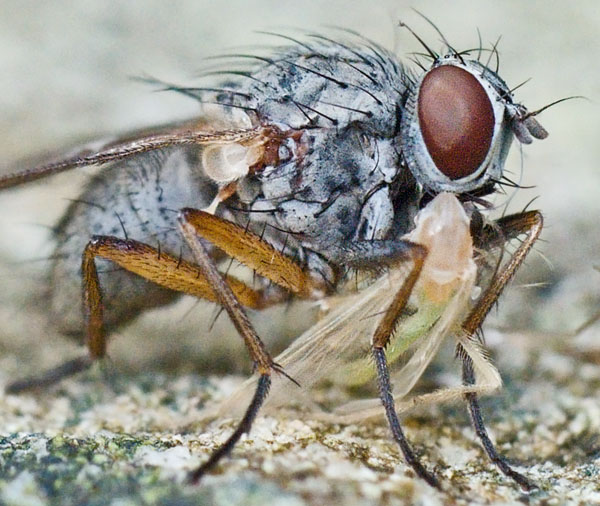 [131.79Kb] Edited by Stephen R on 02-02-2010 20:05 |
|
|
|
| Stephen R |
Posted on 02-02-2010 19:56
|
|
Member Location: Clitheroe Lancashire UK Posts: 2396 Joined: 12.06.09 |
hind tibia:
Stephen R attached the following image: 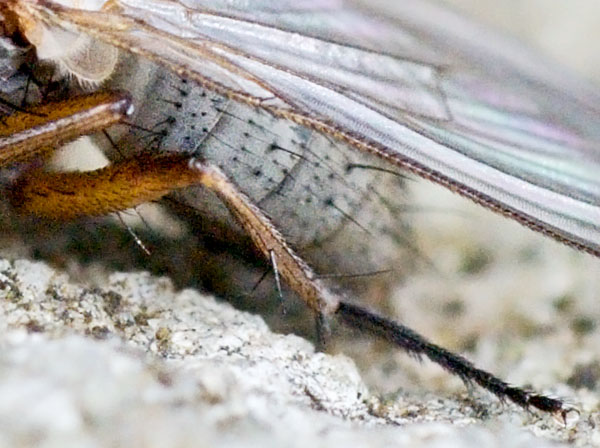 [107.56Kb] |
|
|
|
| Stephen R |
Posted on 02-02-2010 19:58
|
|
Member Location: Clitheroe Lancashire UK Posts: 2396 Joined: 12.06.09 |
frons
Stephen R attached the following image:  [102.19Kb] |
|
|
|
| javanerkelens |
Posted on 02-02-2010 21:09
|
|
Member Location: Netherlands Posts: 2962 Joined: 18.10.07 |
Just lets go again though the key (and forget for now all the setae  ) )1 Costa extending ot apex of M1 = correct (go to 2) 2 Hind tibia without approximated av and ad setae in middle = correct (go to 10) 10 Last tarsomere not dilated on any pair of legs = correct (go to 14) 14 Hind tibia whit preapical dorsal + pd close together = wrong(they have to be very close and on the same level, and we see on photo 3 they are not !) So....Hind tibia without strong and long closely approximated preapical dorsal+pd seta = correct (go to 17) 17 Lower squama usually much longer than upper one = correct (go to 27) 27 it is a female = correct (go to 67) 67 flagellomere without prominent dorsal tip = correct (go to 71) 71 Proepisternum with 2 setae (you sad..) = correct (go to 75) 75 hindtibia with 1 or more submedian pd = correct (go to 76) 76 fore tibia without distinct ad seta = correct (on photo 1 you can see an posterior seta on tibia 1) (go to 77) 77 femora partly darkened (fore femur is dark) , mid and hind femora darkened apically and flagellomere dark = correct ..........so must be C.emiliae But i see also on tibia 2 an pd or posterior seta and in the discription is standing ..female has strong ad....and no mention about pd or posterior. Just save it for now as a C.emiliae. Than forget the fly for 14 days (have fun, go out, drink wine, etc..   ) )And after 14 days just try again and maybe you will see the fly as new and see things you don't see right now! Joke 
Edited by javanerkelens on 02-02-2010 21:11 |
|
|
|
| Stephen R |
Posted on 02-02-2010 22:28
|
|
Member Location: Clitheroe Lancashire UK Posts: 2396 Joined: 12.06.09 |
It's couplet 75 I have trouble with, because I don't think this is a submedian pd. Look at the diagram of C. emiliae, plate 44e - the seta is in the wrong place. Surely 'submedian' means 'not quite at the middle', rather than 'beyond the middle' of the tibia? And as I said above, this is more 'dorsal' than 'posterodorsal'. From 75 I go to 78>79>80>81>84>85>87>88>89>90>C. lineatipes Good idea about the wine though  
Edited by Stephen R on 02-02-2010 22:51 |
|
|
|
| javanerkelens |
Posted on 03-02-2010 00:03
|
|
Member Location: Netherlands Posts: 2962 Joined: 18.10.07 |
The other option on couplet 75: Hind tibia without pd setae! But we have now a very large dorsal seta (you say it is a dorsal seta) And i don't know a species with 1av+1ad+1dorsal seta on the hind tibia. And with such large dorsal seta, there would be a mention about in the description of the species. Coenosia is not an easy family and there is lots of confusion between the species. Maybe you can save the fly for an expert, such as Nikita Vikhrev, and maybe he wil take a look at your fly! I also have lots of Coenosia species waiting for a name, but need also some alcohol to begin with....   I wil take a very large cup of tea now.......and sleep well .....i hope  Joke |
|
|
|
| Stephen R |
Posted on 03-02-2010 00:14
|
|
Member Location: Clitheroe Lancashire UK Posts: 2396 Joined: 12.06.09 |
Good morning, Joke! javanerkelens wrote: And i don't know a species with 1av+1ad+1dorsal seta on the hind tibia. From fig. 44a, C. bilineella is such a fly, and the description doesn't mention the dorsal seta (I think because pre-apicals don't count. Only trouble is that bilineella has a short lower calypter. Stephen. Edited by Stephen R on 03-02-2010 11:07 |
|
|
|
| javanerkelens |
Posted on 03-02-2010 11:35
|
|
Member Location: Netherlands Posts: 2962 Joined: 18.10.07 |
Oké…then the dorsal seta has to be a preapical dorsal seta! On the photo i added, we indeed can see also a preapical anterior dorsol seta. Presuming both setae are preapical, there is indeed no posterodorsal present (couplet 75) Then we can go again from there: 75 Hind tibia without posterodorsal setae = correct (go to 78) 78 Mouthedge seems not projecting beyond level of profrons (what i see) = correct (go to 79) 79 Is the av on t3 in a ventral position....or not (difficult to for me to say) When it is = it is C.pudorosa When not = go to 80 80 subcostal cell on wings not darkened = correct (go to 81) 81 antenna entirely black + only one presutural dorsocentral = correct (go to 84) 84 mid and hind femur entirely or predominantly yellow, at most apical half contrasting black = correct (go to 85) 85 hind tibia with only one av = correct (go to 87) 87 posteroventrals on whole length of hindfemur + body longer then 3.5 mm or posteroventrals only in basal half + body at most 3.5 mm You said the fly was 4.5 mm, so there has to be pv on the whole length of the hindfemur ! = go to 88 88 presutural acrostichals in 2-3 well separated rows + flagellomere about 2.5 times as long as broad+ scutum with 2 distinct longitudinal stripes = seems correct (go to 89) 89 presutural acrostichals in 2 rows = correct (go to 90) 90 frontal triangle reaching anterior margin of frons = C.albicornis frontal triangle not reaching anterior margin of frons = C.lineatipes I personally think the frontal triangle is reaching anterior margin (the silvery line going from the triangle to almost the margin of frons) Possible species C.pudorosa + C. Albicornis + C. Lineatipes Based on the absent of a dorsal seta you mentioned before Remember also......this is a female and discription of the females are very poor !! Succes again....  Joke javanerkelens attached the following image: 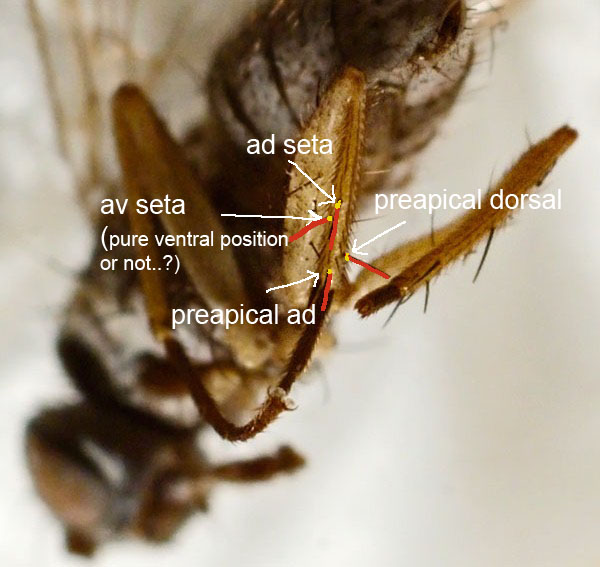 [101.03Kb] |
|
|
|
| Stephen R |
Posted on 03-02-2010 12:19
|
|
Member Location: Clitheroe Lancashire UK Posts: 2396 Joined: 12.06.09 |
Excellent! I checked the av under the scope, and it is definitely not truly ventral, so I think C. pudorosa is out (also the palpi are black to the base, not brown with yellow base). I thought albicornis at first, but then read in the description of lineatipes 'Frontal triangle ... rarely continuing as an indistinct greyish line in anterior half of frons' and thought this fitted better. Also the female C. lineatipes has 'fore femur often predominantly darkened', whereas in albicornis it should be yellow at least on the ventral side. I did check the pvs, and they are long along the whole length of the hind femur. So I think everything fits for C. lineatipes   AND there is a pinned specimen in the Gallery which looks like a reasonable fit (including the pre-apical dorsal seta AND there is a pinned specimen in the Gallery which looks like a reasonable fit (including the pre-apical dorsal seta  ). ).Thank you again for your saint-like patience! I think we have a result   Stephen. Edited by Stephen R on 03-02-2010 12:33 |
|
|
|
| Stephen R |
Posted on 03-02-2010 12:37
|
|
Member Location: Clitheroe Lancashire UK Posts: 2396 Joined: 12.06.09 |
This view shows the pds [edit: sorry, pvs] on the femur and the av on the tibia - and the black palpi.
Stephen R attached the following image:  [124.9Kb] Edited by Stephen R on 03-02-2010 14:55 |
|
|
|
| javanerkelens |
Posted on 03-02-2010 13:33
|
|
Member Location: Netherlands Posts: 2962 Joined: 18.10.07 |
Congratulations !! Joke 
javanerkelens attached the following image: 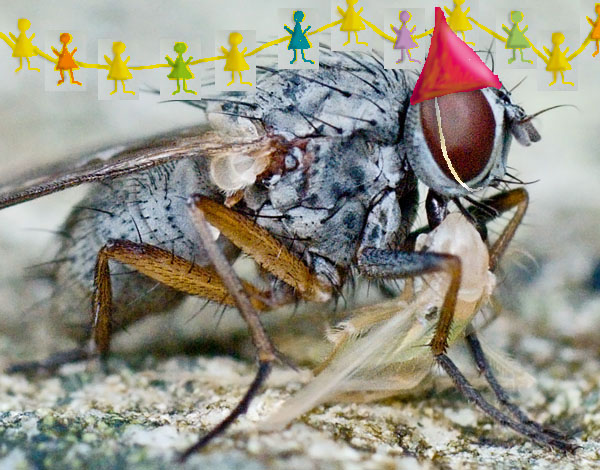 [138.55Kb] |
|
|
|
| Stephen R |
Posted on 03-02-2010 14:12
|
|
Member Location: Clitheroe Lancashire UK Posts: 2396 Joined: 12.06.09 |
   Thank you! Shall we submit that version to the Gallery? Open a bottle for me  (and drink it all yourself!) (and drink it all yourself!)Stephen. |
|
|
|
| jorgemotalmeida |
Posted on 03-02-2010 14:13
|
|
Member Location: Viseu - PORTUGAL Posts: 9296 Joined: 05.06.06 |
then Joke cannot help you... |
| Stephen R |
Posted on 03-02-2010 14:51
|
|
Member Location: Clitheroe Lancashire UK Posts: 2396 Joined: 12.06.09 |
One day she will be sober again  I need all the help I can get! I need all the help I can get! |
|
|
|
| oxycera |
Posted on 03-02-2010 14:55
|
|
Member Location: Barnsley, South Yorkshire Posts: 251 Joined: 31.12.09 |
As someone planning to 'get into' calypterates this season, may I thank you two guys again for sharing your knowledge in this way. |
|
|
|
| oxycera |
Posted on 03-02-2010 15:01
|
|
Member Location: Barnsley, South Yorkshire Posts: 251 Joined: 31.12.09 |
PS According to the British Check-list, albicornis and lineatipes are synonyms. |
|
|
|
| Roger Thomason |
Posted on 03-02-2010 15:01
|
|
Member Location: Mossbank,Shetland Isles. Posts: 5248 Joined: 17.07.08 |
St. Joke works better while sloshed. Are you going to check in to the Priory now Stephen? Dipterologists Anonymous has one new member...I'll have to make you out a Certificate when/if you ever get cured. Roger |
|
|
|
| Stephen R |
Posted on 03-02-2010 15:01
|
|
Member Location: Clitheroe Lancashire UK Posts: 2396 Joined: 12.06.09 |
I have nothing to share but my ignorance - but you are welcome to that. Take as much as you like; there'll be plenty left  Stephen. |
|
|
|
| Stephen R |
Posted on 03-02-2010 15:13
|
|
Member Location: Clitheroe Lancashire UK Posts: 2396 Joined: 12.06.09 |
oxycera wrote: PS According to the British Check-list, albicornis and lineatipes are synonyms. Thank you! MCE has a note on this (apparently suggested by Pont in 1986) and maintains that they really are distinct species with different male terminalia. Who knows? Roger, I haven't touched a drop. Still waiting for that pint of single malt  As for the diptera, I could stop any time I want. I just don't want to. (Monroe, 1959). As for the diptera, I could stop any time I want. I just don't want to. (Monroe, 1959).Stephen. Edited by Stephen R on 03-02-2010 15:17 |
|
|
|
| Jump to Forum: |




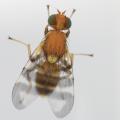
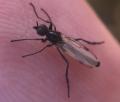

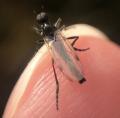
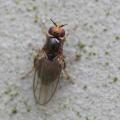


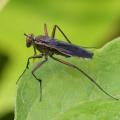


 but don't see the image in the post.
but don't see the image in the post.